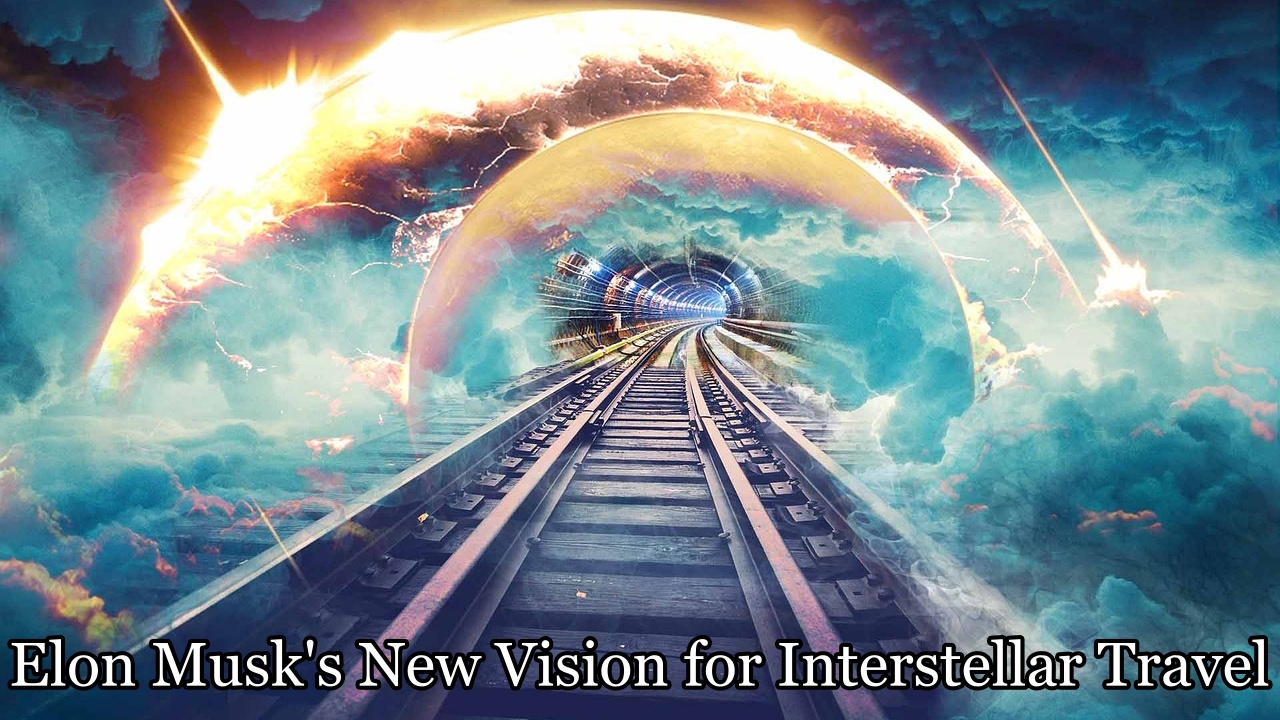Have you ever imagined traveling among the stars? Picture journeying so far into the vastness of space that our Sun becomes just another speck of light in an infinite sky. It might sound like science fiction, but Elon Musk and SpaceX are already laying the groundwork for humanity’s future in interstellar exploration. While this goal is ambitious, what if SpaceX can truly pull it off?
In this post, we’ll dive into Elon Musk’s grand vision for interstellar travel, from the development of the Starship to the possibility of reaching nearby stars like Proxima Centauri. Here’s what the future could look like.
The Road to Interstellar Travel: SpaceX’s Starship Super Heavy
SpaceX has already made waves with its Starship and Super Heavy booster — a powerful launch vehicle designed to take humans to Mars and beyond. With twice the power of NASA’s Saturn V rocket, the Starship is a key piece of the puzzle for interplanetary travel. However, Elon Musk’s ambitions go far beyond our solar system.
Musk has big plans to upgrade this existing Starship project into something even larger and more capable, one that could eventually send humans to other star systems. This ambitious goal might seem beyond the reach of any one company, let alone a private company like SpaceX, but Musk is determined to make humanity a “multiplanetary species.”
Why Mars Is the First Step for Interstellar Travel
Before we even think about reaching other stars, we need to secure our place on Mars. SpaceX has set an ambitious target to send 1 million people to Mars by 2050, with the goal of creating a self-sustaining colony. This colony is the first step in building a spacefaring civilization and is crucial for humanity’s survival in the long term.
Currently, the distance between Earth and Mars varies from 34 million to 250 million miles, which makes interplanetary travel difficult and rare. The window for launching to Mars is only open once every 26 months when the planets are closest. Despite these challenges, SpaceX envisions Martian colonists being able to govern themselves, avoiding the bureaucratic delays and communication lags caused by Earth’s 4-24 minute transmission time. The long-term goal is to make Mars independent and self-sustaining — a powerful hub for space commerce, much like Earth’s economy today.
The Need for Advanced Technology to Reach Other Star Systems
While SpaceX is focused on making Mars a reality, the long-term goal is far more ambitious: interstellar travel. The nearest star system, Proxima Centauri, is more than 4 light-years away — that’s around 25 trillion miles. With chemical rockets, even the most powerful ones like SpaceX’s Starship, it would take hundreds of thousands of years to make the journey.
To reach distant stars, a vehicle with far greater speed and power is needed. This is where SpaceX’s interest in nuclear propulsion comes into play. A nuclear-powered spaceship could potentially reach Proxima Centauri in about 50 years, but this would require an even larger vehicle than Starship, possibly one that stretches over a kilometer long.
The Challenges of Interstellar Travel: Massive Ships and Generational Crews
A spacecraft capable of traveling to another star system would need to carry a large crew — at least 100 people to ensure genetic diversity and the health of the population. The ship would have to support this crew for multiple decades, with systems to recycle air, water, and food. In addition, artificial gravity would likely be required to keep the crew healthy during the long journey. This could be achieved by rotating the living quarters, creating centrifugal force to simulate gravity.

Such a massive ship would present a huge challenge in terms of fuel. SpaceX could mine uranium from the Moon or Mars or source it from asteroid mining companies. But as huge as this project is, it might be the most feasible method for interstellar travel, at least for now.
Can Antimatter Power the Future of Space Travel?
While nuclear propulsion seems like the most plausible method, there’s an even more exciting possibility: antimatter. Antimatter is incredibly efficient, packing nine times the energy of nuclear fission. With this power, SpaceX’s interstellar spaceship could reach distant star systems in a fraction of the time, potentially cutting travel time to just a few decades instead of several centuries.
The main challenge with antimatter, however, is its production and storage. Currently, creating antimatter requires expensive particle accelerators, and safely storing it on a spacecraft is another daunting problem. But there’s hope: anti-particles are captured by strong magnetic fields like those around Jupiter. A spacecraft could potentially harvest antimatter from Jupiter’s magnetosphere using a magnetic scoop.
Faster-than-Light Travel: The Dream of an Alcubierre Drive
There’s also a theoretical way to achieve faster-than-light travel: the Alcubierre Drive. This concept involves creating a “wave” in the fabric of space itself, allowing the spacecraft to “surf” on the wave and travel faster than light. The advantage of this method is that the ship wouldn’t experience time dilation, which means the passengers wouldn’t age much during the journey.
Unfortunately, the Alcubierre Drive is still highly theoretical and would require an immense amount of energy and exotic materials to operate. But if proven, it could revolutionize interstellar travel, cutting journey times from decades to months.
SpaceX’s Financial and Technological Strategy
SpaceX has already laid the groundwork for many of the necessary technologies to make interstellar travel a reality. They’ve developed Starship, a Mars-capable vehicle, and Starlink, a satellite network providing global internet coverage. Starlink alone could generate a massive revenue stream — potentially up to $1 trillion per year — allowing SpaceX to fund its future projects, including the ambitious goal of interstellar travel.

The question remains: can SpaceX pull it off? Interstellar travel seems like an overwhelming task even for a company as innovative as SpaceX. However, by colonizing Mars first, building the necessary infrastructure, and perfecting advanced propulsion systems, they could turn the dream of interstellar travel into a reality.
The Road Ahead: SpaceX and the Future of Human Exploration
Although interstellar travel remains a distant goal, SpaceX’s dedication to advancing space technology is undeniable. By pushing forward with their Mars colonization plans, building reusable spacecraft, and exploring advanced propulsion technologies like nuclear power and antimatter, SpaceX is paving the way for humanity’s future in the stars.
While reaching other star systems might take decades or even centuries, the groundwork being laid today will ensure that humanity is ready when the time comes. With SpaceX’s innovative approach and Musk’s relentless drive, the dream of becoming an interstellar species is closer than ever before.
So, while the future of interstellar travel is still uncertain, one thing is clear: if anyone can make it happen, it’s SpaceX. And who knows? Perhaps in the not-too-distant future, we’ll all be looking up at the stars, knowing that we have the technology to reach them.
Read More:


1 thought on “Elon Musk’s New Vision for Interstellar Travel: What You Need to Know”